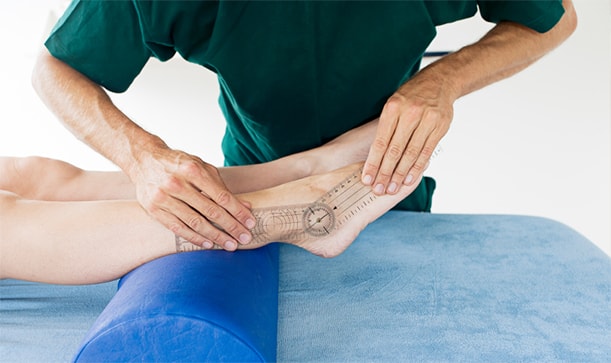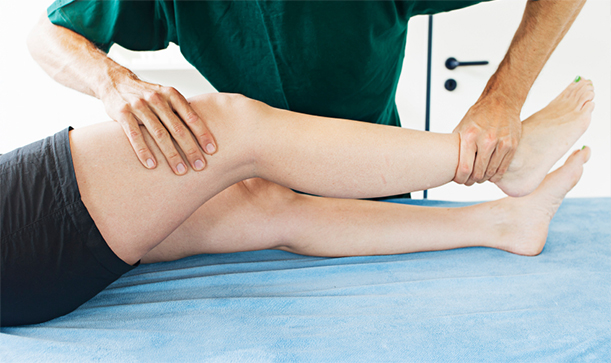CK Physiotherapy
AREAS COVERED
W7, W5, W13, Ealing, West London
57 Elthorne Avenue
Hanwell, W7 2JY
T: 020 8566 4113
M: 079 572 46185
E: info@ckphysio.co.uk
Location / Parking
We are situated in Hanwell, between Boston Manor Road and Northfields Avenue, south of the Uxbridge Road.57 Elthorne Avenue
Hanwell, W7 2JY
There are parking restrictions Mon - Fri 9-10am and 2-3pm. If you need a permit during this time please inform your therapist when you arrive. There are no parking restrictions at other times.
Opening Times
Please phone the number above during working hours to make an appointment. Our reception service will be happy to book your session.
London Underground / Bus Services
London Underground
10 min. walk from Boston Manor Tube Station.
15 min. walk from Northfields Tube Station.
Bus Service
E8, E3, E2, 207, 607, 83
Request Call Back
Our Blog
How To Prevent The Most Common Tennis Injuries
By: admin Date: Jun 30th, 2023
The nights are finally lighter, the weather’s getting warmer, and it’s approaching that time of the year when we’ll be glued to the TV with our strawberries and cream watching the thrills of Wimbledon.
Yep - tennis season is here.
And with the Lawn Tennis Association reporting a huge surge in the popularity of tennis across the UK, we can soon expect to see tennis courts in parks and health clubs enjoying high demand.
But whether you play all year round, or only get your racquet out for a few months every summer - the key to an enjoyable tennis season is making sure you stay injury free.
In this article, we’ll look at some of the more frequent conditions we see in our clinic, and how to prevent common tennis injuries while you’re playing this summer.
Tennis Elbow
Tennis elbow is a condition that’s caused by the repetitive motions you go through when playing tennis. It can be quite a common injury if you play regularly, and the likelihood of suffering from it is increased if you don't have the right equipment or technique.
Some of the early symptoms of tennis elbow include a weakness in your grip, and a slight pain usually found around the outside of your elbow.
The best way to prevent tennis elbow is to make sure your racquet has the correct grip size, and you’re using the proper technique.
Ankle Sprains
When you’re playing a competitive game of tennis, you’re likely to make a lot of quick, multi-directional movements with your feet as you position yourself for your shots.
It only takes a slight slip or misstep to risk an ankle sprain.
If you do suffer from an ankle sprain, you’re likely to know about it with sharp pain at the time of the injury. Once you’re off the court and resting at home you might experience symptoms such as pain when you put weight on your leg, and some inflammation and swelling.
The best preventive measures you can take to avoid ankle sprains are to wear tennis shoes with good ankle support while you’re playing.
Rotator Cuff Injury
Your rotator cuff is a group of muscles and tendons that you can find around your shoulder joint.
When you’re playing tennis, you use your shoulders a lot for your groundstrokes and also when you serve. Repetitive use of your shoulder when playing - especially if you’re going for powerful shots and serves, can cause a rotator cuff injury.
If you’re suffering from pain in your shoulder and have difficulty lifting your arm - you might be suffering from an injury to your rotator cuff and should have your condition professionally diagnosed.
If you’re looking for ways to prevent a rotator cuff injury, you might consider looking at shoulder strengthening exercises if you’re a regular player, and also making sure you have the proper technique when serving and hitting powerful shots.
Wrist Tendonitis
The tendons in your wrist control the movements of your fingers, hands, and wrists. Repetitive motions while playing tennis can cause your tendons to get inflamed - a condition called wrist tendonitis.
The most common symptoms are pain in your wrists and swelling around the affected area. You might also find it a challenge to perform certain movements with your wrist or hand. Provide preventive measures, such as using the correct grip technique, strengthening wrist and forearm muscles, and taking regular breaks to rest the wrist.
Back Pain
Lower back pain is a common complaint among regular tennis players. The repetitive twisting and stretching as you play can cause a lot of strain on the tendons,
muscles, and ligaments in your lumbar region.
The symptoms of back pain from tennis can vary, ranging from a sharp pain in your lower back to a dull and persistent pain that won’t seem to go away. Some people might also suffer from muscle spasms.
If you suffer from any ongoing pain in your back, it’s important to speak to a medical professional as soon as you can to get your condition diagnosed. Untreated back injuries
can quickly increase in severity and develop into something more serious.
To try and prevent back injuries from tennis, you might consider exercises designed to help strengthen your core and ensure you maintain proper technique.
Knee Injuries (Jumper's Knee)
Jumper's knee is the common name given to patellar tendonitis, which is caused by inflammation of the patellar tendon that connects your kneecap to your shin bone.
Patellar tendonitis is common amongst tennis players, as regular repetitive quick movements, jumping, and abrupt stopping to reach your shots can lead to aggravation and
inflammation of your tendons.
Initial symptoms of jumper’s knee can be a pain in your knee when climbing stairs and a feeling of stiffness. But left untreated it can cause more serious injuries such as a tear in your tendon. So if you’re a regular tennis player and you’re experiencing some of these early symptoms, it’s worth visiting a physiotherapist to have it checked out.
The most common way to treat jumper’s knee is with plenty of rest and elevation, and your GP or physical therapist might also advise ice packs and anti-inflammatory medicines.
But prevention is better than cure. Most jumper’s knee injuries can be prevented by performing appropriate warm-up and cool-down exercises and making sure you’re wearing appropriate footwear for playing tennis.
Preparation is the key to an injury-free tennis season
If you’re looking for how to prevent common tennis injuries like the ones we’ve discussed, you can take the right steps by properly preparing your body for exercise, wearing
appropriate footwear, and using the right equipment.
A dynamic warm-up routine
A dynamic warm-up routine prepares your body for the physical demands of exercise by increasing body temperature, improving flexibility, and promoting blood flow to the muscles you’re going to be using.
The key to an effective dynamic warm-up is to make it sport-specific, for example using the muscles and mimicking the movements that you’re going to be engaging in playing tennis.
There’s a great Masterclass article on some of the best tennis warm-up exercises to help you prevent injury, including:
● Straight leg marches
● Hand walks
● Standing trunk rotations
● Lateral lunges
● Jumping jacks
● Knee lifts
● Practice swings
Using the right equipment
To help prevent tennis injuries, it’s also really important that you use the right equipment. Having a tennis racquet that is the right weight, balance, and has the right grip size is an important step to achieve this.
There’s a great podcast episode by Tennis Fixation that looks at all the important things you should look at when choosing a racquet that is perfect for improving your performance and avoiding injuries.
Choose the right footwear
A lot of the sporting-related injuries we see in our clinic come from people choosing the wrong kind of footwear. Fashion trainers are not a good choice for dynamic, explosive sports like tennis!
When you’re looking for the right shoe for tennis, you want to look for something that has the right ankle support, the right grip, and also a combination of stability and flexibility to keep you safe and injury-free on the court.
Ascics has a great guide to help you choose the right tennis shoe for different surfaces.
When to seek medical attention for your tennis injury
Even when you follow the right advice for how to prevent common tennis injuries, it can be an intense and explosive sport and injuries can occur.
If you’re experiencing any prolonged or recurring pain from your tennis injury, it’s important to get the right professional advice from your GP or physiotherapist.
A lot of injuries can become more serious over time if they are left undiagnosed and untreated.
At CK Physiotherapy we have a team of licensed physiotherapists in the Ealing area who specialise in the assessment, diagnosis, and treatment of sports injuries.
Just get in touch to book an initial consultation and one of our specialists will review your condition and produce an individualised treatment plan.
References
How To Prevent and Treat Six Common Tennis Injuries. Retrieved from https://gotoortho.com/
Common Tennis Injuries. Retrieved from https://besttennisguide.com/
Common Tennis Injuries Monthly First Aid Tip. Retrieved from https://www.tennis.com.au/
The Huge Popularity Surge in British Tennis. Retrieved from https://www.allabouttennis.co.uk/
Conditions and Diseases - Patellar Tendonitis. Retrieved from https://www.hopkinsmedicine.org/
Muscle Bone and Joints. Retrieved from https://www.nhsinform.scot/
Play Tennis What You Need to Know About Jumper's Knee. Retrieved from https://noyeskneeinstitute.com/
Dynamic Warm-up Exercises. Retrieved from https://www.nytimes.com/
Prevent A Tennis Back Injury Before It Happens. Retrieved from https://www.atlantabrainandspine.com/
Tennis Warm-up Guide. Retrieved from https://www.masterclass.com/
How to Prevent Common Injuries Caused by Your Tennis Racquet Tennis Quick Tips Podcast. Retrieved from https://tennisfixation.com/
Choosing The Right Tennis Shoes. Retrieved from https://www.asics.com/





